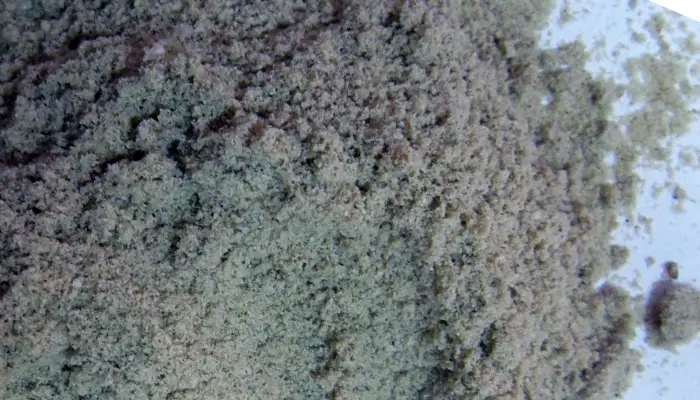Bran is the outer cuticle layers and germ directly beneath the hull that remain intact in brown rice but are stripped off when white rice is polished. Rice bran has a sweet, nutty flavor and is rich in vitamins, minerals, and fiber.
Rice bran is best suited for breakfast, although it can be used for other meals. It has a dense texture to keep you going for hours. When looking at rice bran, and its uses, muffin recipes will be the primary offering.
According to WebMD, rice bran comes from the outer layer of rice (Oryza sativa). Rice bran oil is popular as a “healthy oil” in Japan, Asia, particularly India.
Although rice bran is used for high cholesterol, diabetes, high blood pressure, athletic performance, and many other purposes, there is no scientific evidence to support many of these uses.
Be careful not to confuse rice bran with other forms of bran such as oat and wheat bran.
Contents
1. Oat Bran
Oat Bran is the outer layer of the oat groat, which sits just beneath the inedible hull. While oat groats and steel-cut oats naturally contain bran, oat bran is also sold separately as its product.
It is linked to many health benefits, such as improved blood sugar control, healthy bowel function, and lower blood pressure and cholesterol.
Substituting oat bran tastes similar to rolled oats or steel-cut oats, but with an added nutty flavor. It has a crunchy texture when raw and becomes soft when cooked with water or milk.
It is a whole-grain food made from oat groats that have been ground into tiny pieces. It has a nutty flavor and a slightly chewy texture. Because it’s so high in fiber, it may help to lower cholesterol levels and control blood sugar (1).
Oat bran can be used as an ingredient in breads and other baked goods, but it’s also eaten on its own as a cereal or added to other foods.
= 1 cup oat bran is a replacement for 1 cup rice bran
2. Wheat Germ
Wheat germ is a product of milling whole wheat, and it is a nutritious and crunchy addition to baked foods that adds a nutty taste.
The outer layers of the wheat kernel are removed during milling to produce white flour. What remains inside are the nutrient-rich grain components – including the germ, bran and endosperm – which are then milled into whole wheat flour.
The germ is actually the embryo of the plant which sprouts when planted; it contains lots of vitamin E, B vitamins and minerals such as zinc, magnesium and iron. The bran is rich in fiber while the endosperm provides most of the carbohydrates found in wheat products.
The flavor of this nutty-flavored seed depends on how it’s prepared: raw wheat germ has a mild taste while roasted wheat germ has a more pronounced nutty flavor reminiscent of popcorn or roasted nuts.
Benefits of wheat germ:
- High levels of vitamin E
- High levels of thiamin (vitamin B1)
- Rich source of nutrients including fiber, protein and minerals like iron and zinc
= 1 cup wheat germ substitutes for 1 cup rice bran
3. Wheat Bran
The rough covering of wheat berries is a wealth of dietary fiber. The bran is packaged and sold in supermarkets and can be used to add fiber to a variety of dishes, from meatloaf to pieces of bread.
Wheat bran is a fiber supplement used in muffins, rolls and bread, pancakes, and even smoothies. When combined with breadcrumbs, wheat bran is a coating for chicken or fish.
Wheat bran is a good source of dietary fiber, which helps regulate bowel movements by adding bulk to stool and softening it so it passes through your system more easily. They’re almost interchangeable which is why we also included rice bran on our post of the best wheat bran substitutes.
Wheat bran is rich in fiber and phytochemicals, but has little to no protein content. Wheat bran contains about 3 percent fat, with about half being polyunsaturated fats and about one-quarter being saturated fats.
= 1 cup wheat bran can replace 1 cup rice bran

FAQ
Is rice bran the same as rice?
Rice is a plant. According to WebMD, rice bran comes from the outer layer of rice (Oryza sativa). Rice bran oil is popular as a “healthy oil” in Japan, Asia, particularly India.
Although rice bran is used for high cholesterol, diabetes, high blood pressure, athletic performance, and many other purposes, there is no scientific evidence to support many of these uses.
The outer layer of the grain (bran) and the oil made from the bran are used for medicine. Rice bran oil is popular as a “healthy oil” in Japan, Asia, and particularly India.
Is rice bran the same as oat bran?
Rice bran has less dietary fiber and less soluble fiber than oat bran. Oat bran is linked to many health benefits, such as improved blood sugar control, healthy bowel function, and lower blood pressure and cholesterol.